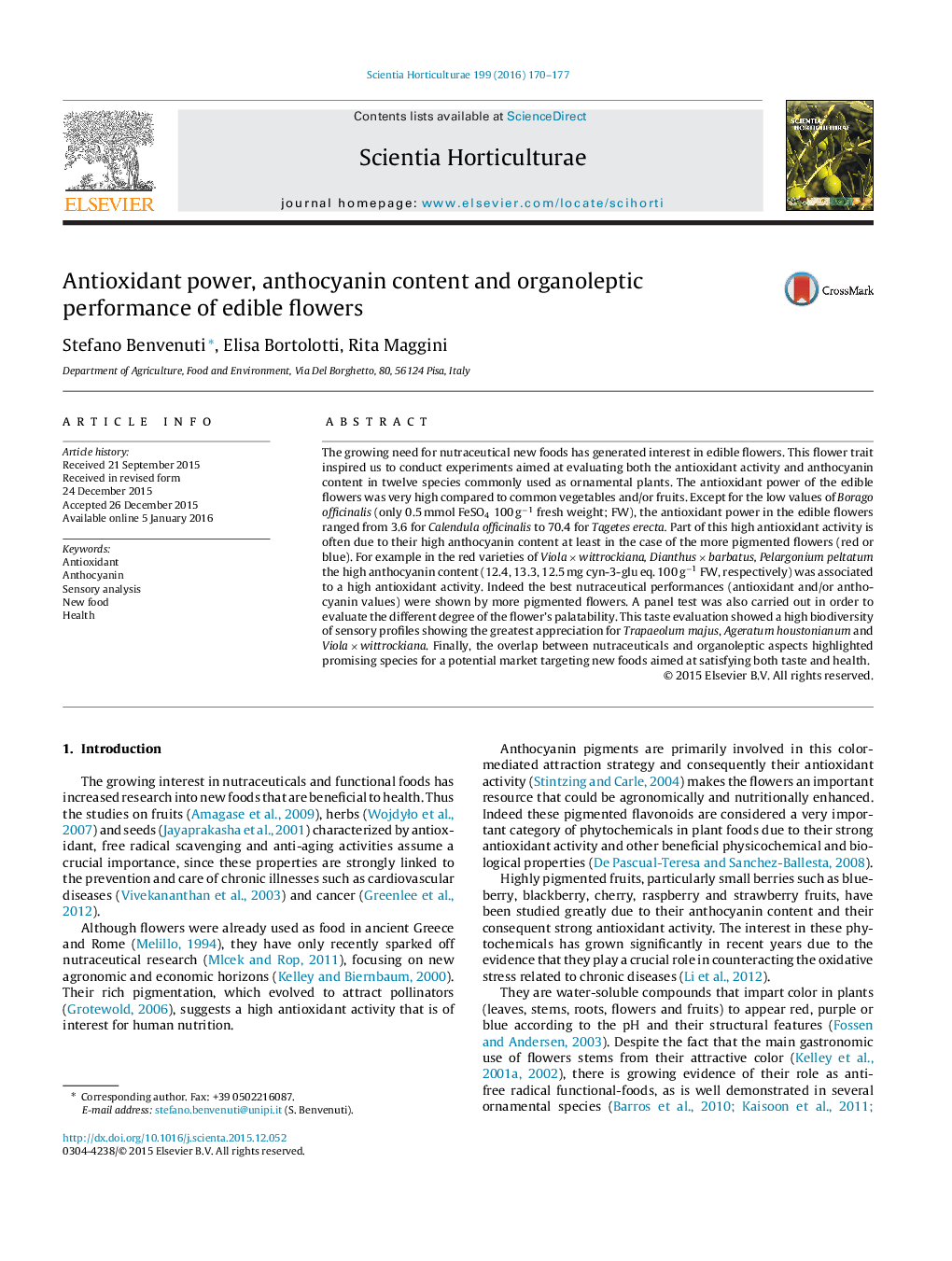| کد مقاله | کد نشریه | سال انتشار | مقاله انگلیسی | نسخه تمام متن |
|---|---|---|---|---|
| 4566128 | 1628799 | 2016 | 8 صفحه PDF | دانلود رایگان |
• Edible flowers provide an opportunity for food innovation based on the ethnobotanical tradition.
• The antioxidant activity of flowers is significantly higher than common leafy vegetables.
• Varieties with red and blue flowers have the greatest antioxidant power due to the highest anthocyanin content.
• A panel test experiment showed a high biodiversity of sensory profiles.
• Some species are likely to be highly popular in a market aimed at taste and health.
The growing need for nutraceutical new foods has generated interest in edible flowers. This flower trait inspired us to conduct experiments aimed at evaluating both the antioxidant activity and anthocyanin content in twelve species commonly used as ornamental plants. The antioxidant power of the edible flowers was very high compared to common vegetables and/or fruits. Except for the low values of Borago officinalis (only 0.5 mmol FeSO4 100 g−1 fresh weight; FW), the antioxidant power in the edible flowers ranged from 3.6 for Calendula officinalis to 70.4 for Tagetes erecta. Part of this high antioxidant activity is often due to their high anthocyanin content at least in the case of the more pigmented flowers (red or blue). For example in the red varieties of Viola × wittrockiana, Dianthus × barbatus, Pelargonium peltatum the high anthocyanin content (12.4, 13.3, 12.5 mg cyn-3-glu eq. 100 g−1 FW, respectively) was associated to a high antioxidant activity. Indeed the best nutraceutical performances (antioxidant and/or anthocyanin values) were shown by more pigmented flowers. A panel test was also carried out in order to evaluate the different degree of the flower’s palatability. This taste evaluation showed a high biodiversity of sensory profiles showing the greatest appreciation for Trapaeolum majus, Ageratum houstonianum and Viola × wittrockiana. Finally, the overlap between nutraceuticals and organoleptic aspects highlighted promising species for a potential market targeting new foods aimed at satisfying both taste and health.
Journal: Scientia Horticulturae - Volume 199, 16 February 2016, Pages 170–177
